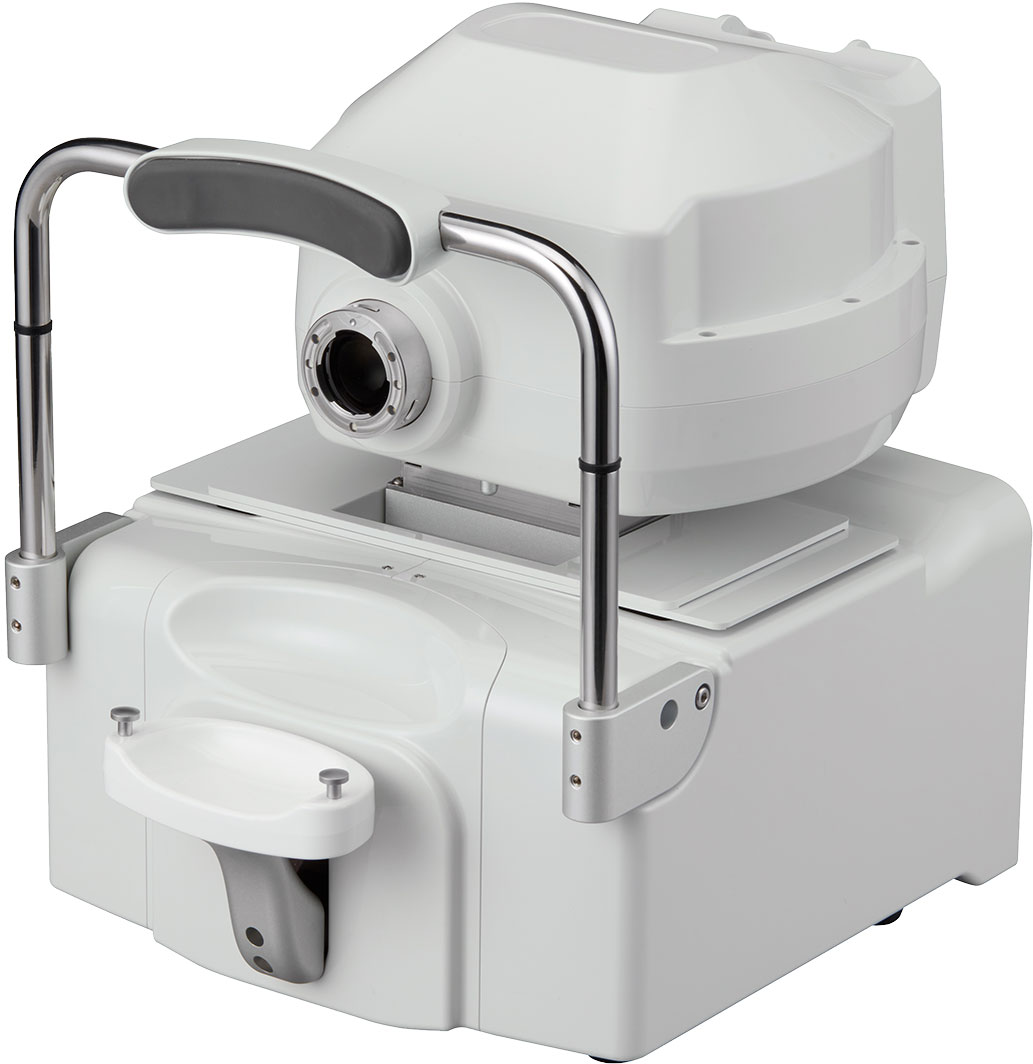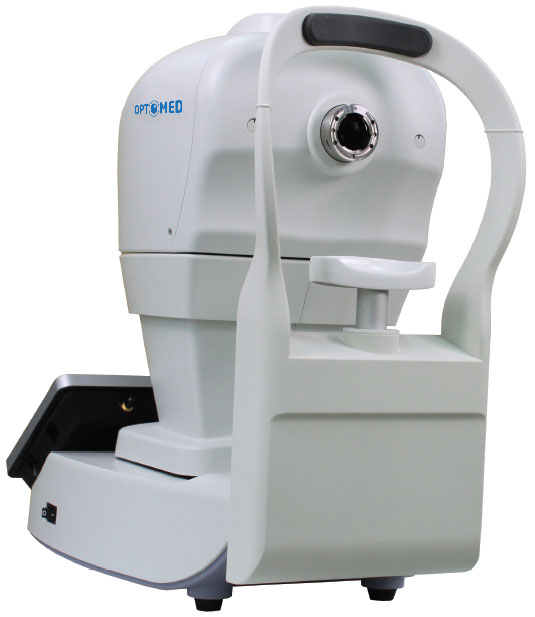If you’re thinking of upgrading your practice’s imaging capabilities, two new tabletop fundus cameras from Optomed, called Halo and Polaris, create crisp, high-res photos that can be easily stored or shared, according to the company.
Both devices can perform non-mydriatic fundus imaging with a 45-degree field of view through pupils as small as 4mm, company literature notes. Both also make use of a 12MP image sensor, include 10 fixation targets, use eye tracking for alignment and autofocus for image acquisition. Imaging options for the devices include color and red-free photography, built-in cup-to-disc measurement and the ability to take anterior segment photos as well, according to Optomed.
 |
| The Optomed Halo 600 is the smaller and lighter option between the two new tabletop fundus cameras. Click image to enlarge. |
The chief differences concern portability and operation. The smaller and more lightweight Halo has no on-board monitor; instead, the practice connects it to a Windows 10 PC during use. A tech with a laptop can be located up to 25 feet away from the patient during imaging, which can take place through a glass wall, a company press release explains. These social distancing capabilities could help you and your patients feel safer during appointments. The Polaris, slightly larger and heavier, has a built-in 10” touch-screen display, according to product literature.
 |
| The Polaris includes a 10" touch screen display. Click image to enlarge. |
Halo and Polaris are DICOM compatible and offer various connectivity options for image sharing and integration with EHR. Optomed says the cameras require less operating time and minimal training compared to other devices for easier integration into practice workflows.
For more information, visit www.optomed.com.

